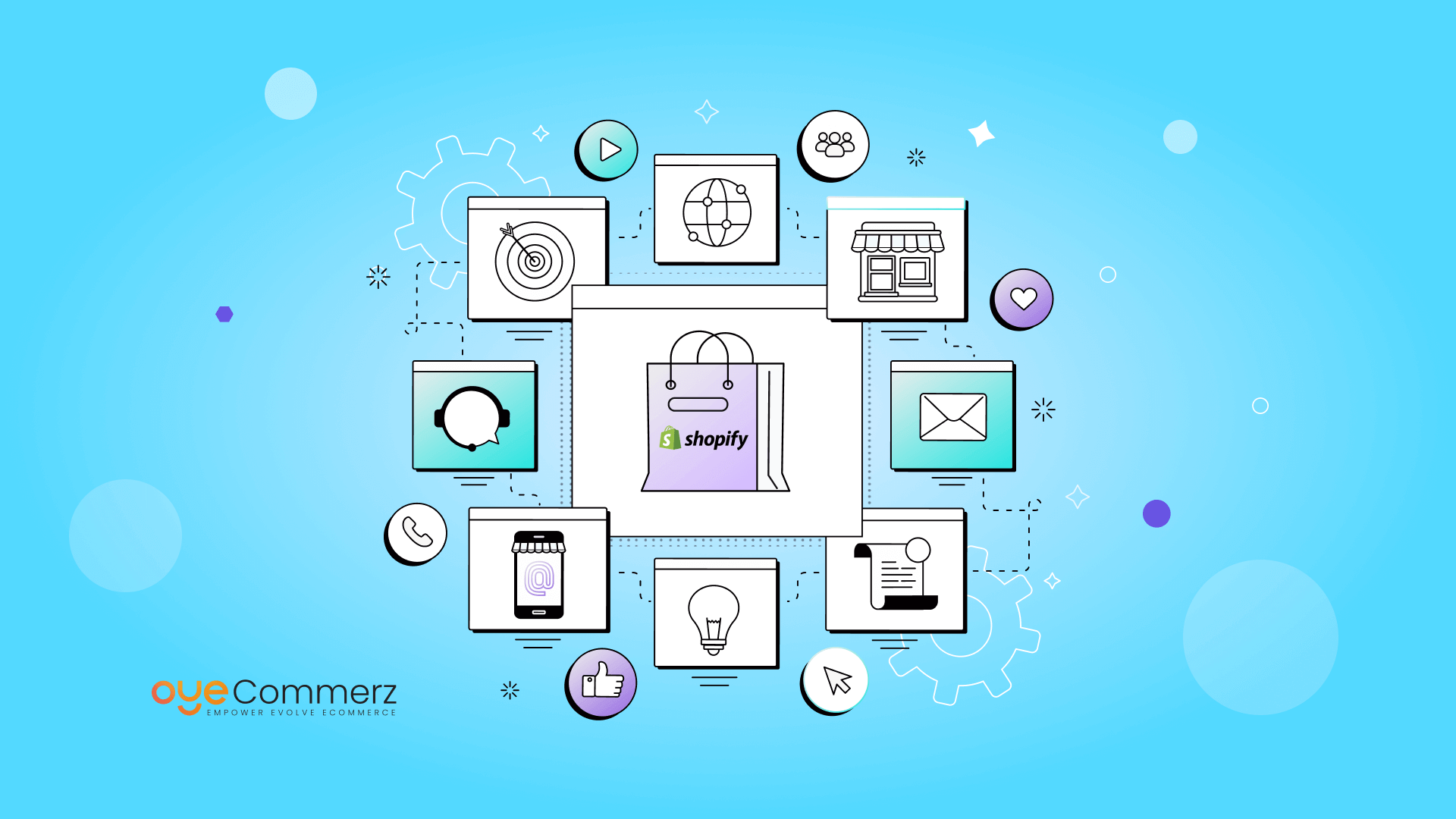
Overview
In this intense e-commerce environment, Shopify sellers are always searching for ways to maximize sales and streamline their operations. A highly effective approach is through tailored Shopify applications customized to address specific requirements. Connecting with the Shopify API and utilizing tools like the Polaris design system, these apps empower businesses to scale efficiently while enhancing customer engagement. In this blog, we’ll explore key aspects of Shopify app-building, from design considerations and essential features to best practices for supporting and scaling apps effectively.
1. Understanding Shopify API Linkage
A comprehensive grasp of Shopify’s API—both REST and Graph Query Language—is key for creating reliable Shopify apps. With these interfaces, programmers can fetch, update, and administer details within a Shopify shop. The GraphQL API enables optimized data management, allowing for speedier replies by fetching only the necessary elements. Connecting the API enables developers to adapt app features to the business’s specific demands, ensuring a integrated UX that improves business productivity and sales.
2. Leveraging the Shopify’s Polaris framework
Shopify’s Polaris framework assists developers to create a cohesive and intuitive interface across Shopify applications. Polaris provides a range of components and recommended practices that fit with Shopify’s branding, ensuring apps look native within the Shopify interface. This approach goes beyond aids intuitive app navigation but also aids ensure branding uniformity, an critical aspect in fostering credibility with clients.
3. Developing within the Shopify App Ecosystem
The Shopify app ecosystem is broad, allowing app creators to create integrated Shopify applications that work within a business’s management system. Integrated applications optimize the user experience by linking smoothly within Shopify’s interface, cutting down on the requirement for distinct sign-ins or further browsing. For developers, leveraging Node.js for backend operations and the React framework for the UI has emerged as a preferred option, as these frameworks enable growth-ready, responsive apps that offer an optimal UX.
4. Core Components for Shopify Apps
A high-performing Shopify application must have features that address critical issues in the e-commerce journey. Automated notifications for immediate alerts, bespoke design customization options, and cross-channel commerce options are essential elements that can boost operational control and user interactions. By adding app visibility strategies these features, Shopify applications not only streamline business processes but also enhance the end-user satisfaction.
5. Effective Approaches for App Development
When developing Shopify apps, it’s essential to follow standard guidelines. Upkeep methods such as consistent improvements, customer support, and security patches are necessary for sustaining user trust. Promotional efforts for Shopify apps can also be utilized to boost app exposure and user base. User retention strategies, including app alerts and reward systems, are essential for retaining users and fostering a devoted following.
6. Growing Shopify Applications for Future Demand
As Shopify businesses expand, expanding app capabilities becomes critical to manage increased traffic and functionality demands. Leveraging on-demand resources and prioritizing information processing through Graph Query Language can enable apps expand without slowdowns. It’s also necessary to have a strategy for expanding the app’s infrastructure to support increased demand, that involves a list for selecting a development partner with experience in Shopify applications.
7. Evaluating the Cost of Creating Shopify Applications
Building custom Shopify applications can differ widely in price depending on the features, linkages, and personalization required. app maintenance strategies Fundamental elements like API integrations, customer engagement tools, and promotional features can drive up costs. However, the revenue benefits is often valuable, as these apps can significantly improve profits and simplify store operations.
8. Upkeep Approaches
Sustaining application performance is just as crucial as initially building it. Frequent patches to address issues, improve security, and keep alignment with the new Shopify versions are key. Proactive app maintenance strategies also feature user assistance and additional improvements that keep up with evolving e-commerce trends.
9. Resources for Developing Shopify Apps
Shopify offers a variety of resources to simplify the app-building journey, from software platforms like Node.js and React.js framework to Webhooks for instant alerts. Platforms including Shopify’s CLI simplify the app creation path, while Shopify App Bridge allows integrated applications to interact seamlessly with Shopify’s control panel. These options are invaluable for developing solutions that are both functional and intuitive.
10. Upcoming Innovations in Shopify App Development
The prospects of Shopify app creation is bright, with innovations heading in the direction of AI-powered features, improved cross-channel functionality, and improved app extension options. As digital retail develops further, developers will need to stay ahead the changes to develop solutions that not only satisfy but surpass market demands.
Conclusion
Custom Shopify apps provide a strategic solution for e-commerce businesses to grow effectively, increase revenue, and enhance workflows. From connecting with data interfaces and the Polaris design system to advanced features and maintenance strategies, all factors of Shopify app creation plays a crucial role in providing a seamless interaction for users. As Shopify keeps evolving, keeping up with emerging directions in software building will help developers make the most of Shopify’s comprehensive offerings, solidifying their place in the e-commerce market.